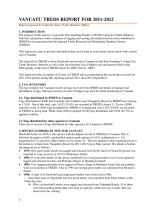Eradication programmes complicated by long-lived seed banks: lessons learnt from 15 years of miconia control on O'ahu Island, Hawai'i


Island and Ocean Ecosystems, BRB
Available Online
The invasive tree Miconia calvescens (Melastomataceae) is a priority for control on the Hawaiian Island of O?ahu due to its potential to replace native ??hi?a (Metrosideros polymorpha, Myrtaceae) forests and degrade watershed function if allowed to establish. The O?ahu Invasive Species Committee (OISC) is attempting to eradicate this species from the island of O?ahu. OISC uses a bu?er strategy based on estimated seed dispersal distance to determine the area under surveillance. This strategy has worked well enough to suppress the number of trees reaching reproductive age. The number of mature trees removed annually is now less than the number initially removed when the programme started in 2001. In 2016, just 12 mature trees were removed from 54.71 km2 surveyed compared to 2002, when 40 mature trees were removed from 8.26 km2 surveyed, a 96% drop in mature trees per square kilometre surveyed. However, miconia has a long-lived seed bank and can germinate after 20 years of dormancy in the soil. Funding shortages and gaps in surveys due to refusal of private property owners to allow access have resulted in some long-range extensions. OISCs results suggest that seed bank longevity is an important factor when prioritising invasive species risk and that allocating more resources at the beginning of a programme to eradicate a species with long-lived seed banks may be a better strategy than starting small and expanding.
